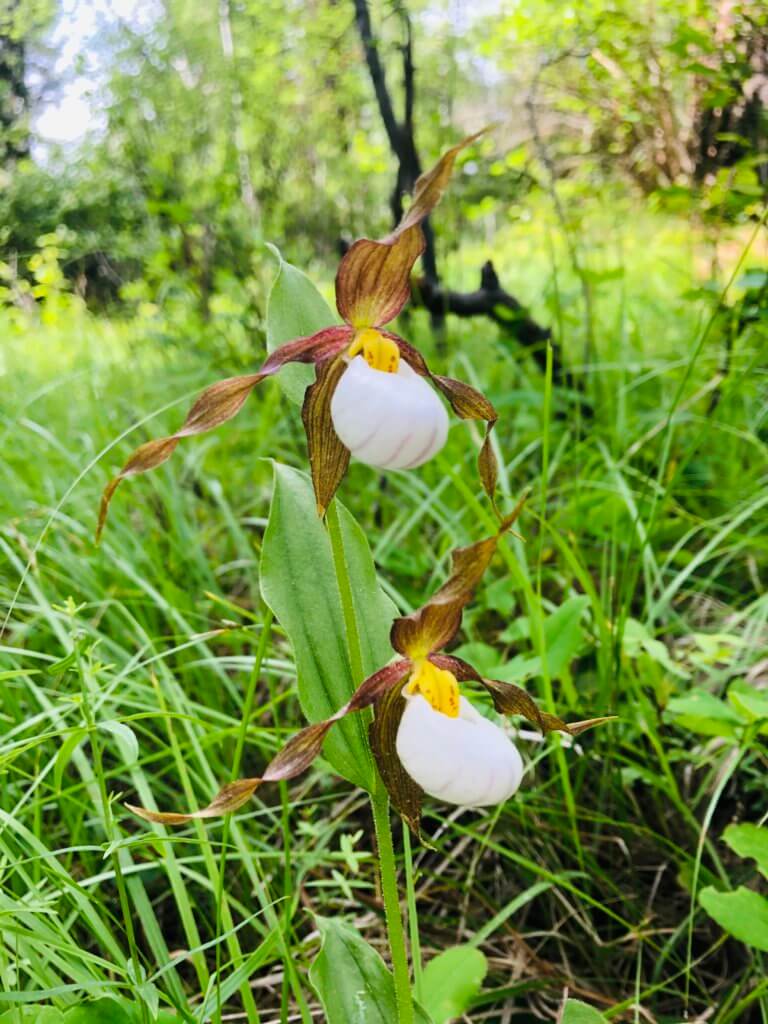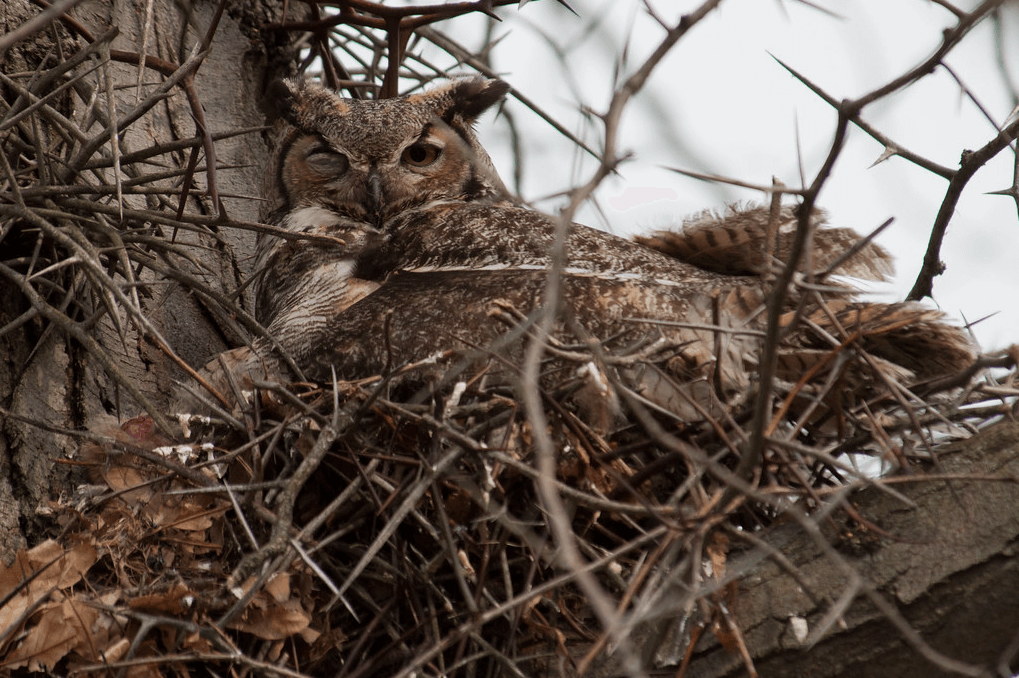Orchids & Pollinators
by Jessica Sherburne
Broadcast 6.16 & 6.19.2020

Lady slipper orchids, a Montana native species. Photo by Allison De Jong.
Listen:
Strolling through the grasslands or mountains of Montana during almost any time of year, you’re sure to be rewarded with the beauty and aroma of wildflowers. The bright colors attract your attention, and the airy fragrance lures you closer for another whiff. This is the very same advertising that attracts many pollinators. In their case, though, the bright colors and smells are the promise of a meal of nectar.
One group of plants, orchids, has a fascinating diversity of ways of attracting birds and bees to pollinate them.
Orchids are the second most widely-distributed family of plants after grasses, and they occur in almost every major ecosystem. Some species of orchids live on the tundra north of the Arctic Circle. Two Australian species grow underground; only the flower will poke above the ground for a brief period.
Orchids also come in a large range of sizes and colors. The largest orchid in the world can grow up to 25 feet high, with leaves that are two and a half feet long. The smallest orchid is the size of President Roosevelt’s nose on a U.S. dime.
Normally, flowers pay their pollinators a reward of nectar in exchange for transferring pollen to others of their type. But surprisingly, not all orchids smell sweet. Some produce the putrid smell of rotting flesh – not a flower you would want as a centerpiece on your dining room table. These species of orchids specialize in attracting flies or beetles that are attracted to carrion.
It’s recently been found that about a third of the 30,000 orchid species in the world are deceptors. This means that they give the appearance of having nectar, but in reality, have none. By not producing nectar, the orchid has spare energy that it uses for other functions, such as growth and production of seeds. Nectarless orchids are masters of mimicry and can appear and smell identical to other nectar-rich orchids. Thus, they draw pollinators into their flower and then the forced pollination begins.
Certain orchids shoot sticky balls of pollen at their pollinators. Others are known to intoxicate the pollinators so that they fall into a chamber inside, and in taking the path out, they become covered in pollen.
Other species of nectarless orchids have developed particularly devious ways to attract pollinators. Their flowers resemble female wasps, and they even emit a potent chemical that mimics the sex pheromone of the female wasp. These orchids draw in male wasps looking for a mate. While they attempt to copulate with the orchid flower, the lovelorn male wasp becomes covered with pollen. After a while of unrequited love, he flies off. And if he’s duped by another orchid flower, he transfers pollen to his new object of affection and thus pollinates that orchid.
So the next time you stroll through the woods and are attracted to a flower because of its bright colors and fragrant aroma, take a closer look. If it’s an orchid that has drawn your attention, remember that it may have some tricks to draw in pollinators.
Every week since 1991, Field Notes has inquired about Montana’s natural history. Field Notes are written by naturalists, students, and listeners about the puzzle-tree bark, eagle talons, woolly aphids, and giant puffballs of Western, Central and Southwestern Montana and aired weekly on Montana Public Radio.
Click here to read and listen to more Field Notes. Field Notes is available as a podcast! Subscribe on iTunes, Google Play, or wherever you listen to podcasts.
Interested in writing a Field Note? Contact Allison De Jong, Field Notes editor, at adejong [at] montananaturalist [dot] org or 406.327.0405.
Want to learn more about our programs as well as fun natural history facts and seasonal phenology? Sign up for our e-newsletter! You can also become a member and get discounts on our programs as well as free reciprocal admission to 300+ science centers in North America!












